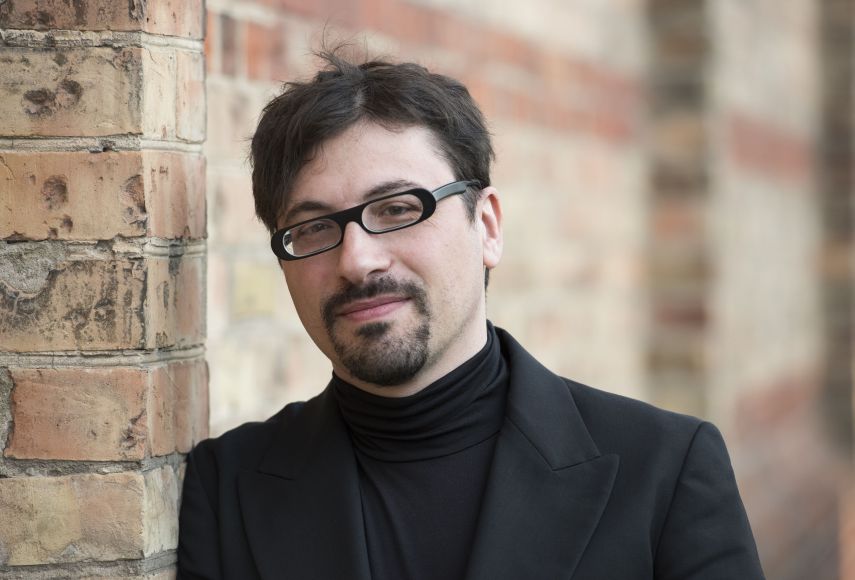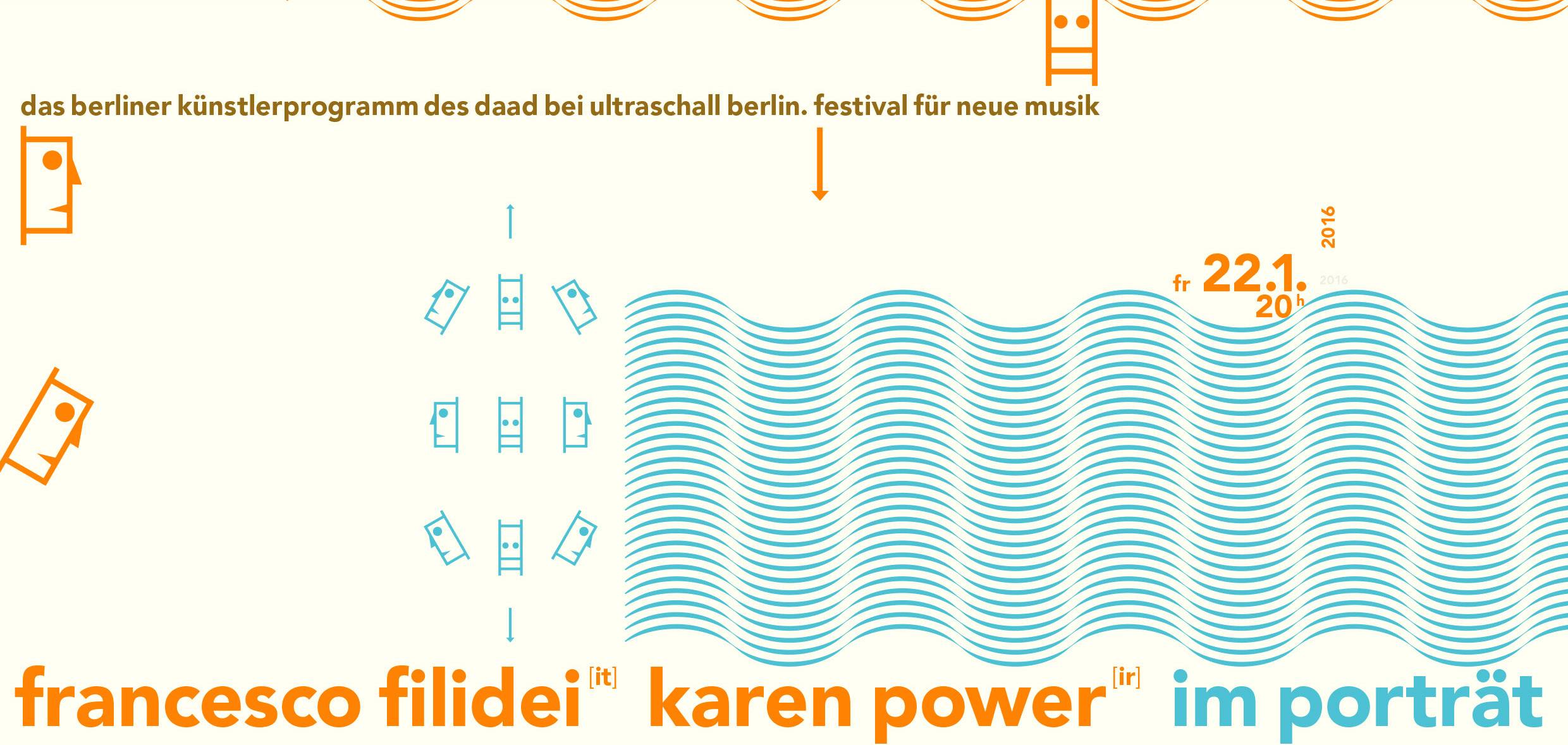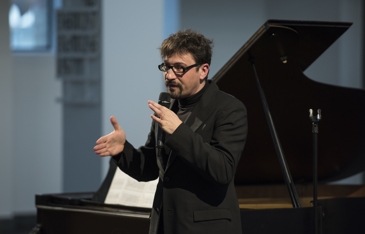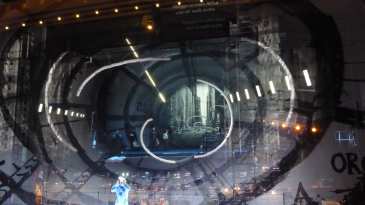Italy, Music, 2015
Francesco
Filidei

Only two sentences about the Italian composer and organist Francesco Filidei can be found on Wikipedia: “Born 1973 in Pisa, student of Salvatore Sciarrino and Jean Guillou. He imagines music which has lost the sound element.” What is not stated in this (scholarly unreliable but in this instance very instructive) source: even without tones, the music is in no way dead.
The simple equations “life = tones” and “death = noise” have opened up a realm of activity for the composer which he, under the influence of his most important teacher Salvatore Sciarrino, has thoroughly explored. In his early Prélude et Toccata (2000) a pianist circles around his instrument as if it’s the skeleton of a dead animal: in search of physical access to a sonic world that blossoms from gestures of knocking, scraping and scratching. Francesco Filidei notates the actions graphically, not wanting them to ossify in classical notation. In his music, noise-death is never the end of everything, quite the opposite. Movements prove to be all the livelier in the dance macabre, and the title too is programmatic: the Italian verb toccare means “to touch”. Physical gestures are at the heart of many of his pieces. From them he also developed the work cycle about an anarchist who was beaten to death in 1972 by the Italian police. In I Funerali dell’Anarchico Serantini (2006), six percussionists sit at a long table, the sole instruments at their disposal being the table and their own bodies: an eerie and increasingly rousing burial ritual.
Francesco Filidei’s musical studies in Florence began with the organ and soon extended to composition. He graduated from the Paris Conservatoire National Supérieur, after which followed a brief intermezzo at the Parisian research center IRCAM. Since then, his path has taken him mainly outside the borders of Italy, where it has become quite difficult to make a living from contemporary music.
Francesco Filidei’s idiom is reminiscent of neither the fragile soundscapes of his mentor Sciarrino nor the elegance and tonal purity of French music. And Helmut Lachenmann’s use of noise in composition also follows a different logic. Filidei’s search is devoted to the fundamental conditions of music: “Why is something called music? How does one decide when a tone begins?” Is it enough, he asks further, if the lungs expand, if the musician’s finger scarcely moves? “One can also make music just out of preliminary movements. This whole game between reality and the portrayal of reality, this border zone, is the most interesting for me.”
However it doesn’t always have to be human bodies that help develop game-playing at the edges between reality and representation. At the center of his project Five Organs are illustrious church organs, each of which will be the subject of an orchestral portrait. The symphony orchestra simulates the sound of the mechanical instrument and the specific way it is constructed as well as the sound of the space within the church and the music played there, including actually unwelcome auxiliary noises such as the clatter of stops and the whooshing of bellows. Five Organs is intended to reveal the organ as only the organist hears it: at his console between the pipes, right next to the mechanics. The first work in the series, Fiori di Fiori, was premiered in Cologne in 2013 and is dedicated to the Biagi organ in Rome’s Basilica of San Giovanni in Laterano. In Five Organs, Francesco Filidei’s experiences as an organist and composer flow together: his enthusiasm for the lifeless, quite harsh noises of the mechanism and the direct liveliness of the physical gesture.
Text: Martina Seeber
Translation: Andrea Lerner
Camera/editing: Uli Aumüller, Sebastian Rausch




